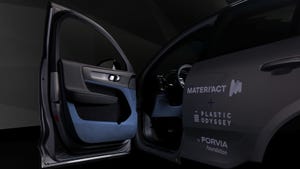As is often the case within a laboratory, experiments that fail to answer the question at hand quite often solve a different problem and sometimes do with extraordinary long-term benefits. In 1942, Harry Coover , a research scientist at the Eastman Chemical Co. (Kingsport, TN), was at work on developing a transparent plastic that could replace glass in gun sights.
January 6, 2011
Coover's discovery, cyanoacrylate, never saw use as a gun sight, but the resin ultimately served a higher purpose in World War II and has maintained its utility in the years since, as super glue. Long before the adhesive, which is actually an acrylic resin that rapidly polymerizes in the presence of water, fixed broken vases or suspended construction workers from steel girders by their hard hats, cyanoacrylate was used in the theater of war by trauma surgeons to seal wounds quickly. Even today, in addition to their at-home use, the glues are still used in hospitals, dental offices and veterinary clinics.
On Dec. 8, Coover's contribution was recognized with the highest scientific honor that the U.S. president can bestow, when he was awarded the National Medal of Technology and Innovation by President Obama in a White House ceremony. The official White House transcript of the ceremony notes "laughter" after the president's mention of "super glue."
The award ceremony in the East Room bestowed National Medal of Science medals to 10 researchers, with Coover and two other individuals granted National Medal of Technology and Innovation awards (a group award went to Intel researchers behind the first microprocessor). The winners were originally announced on Oct. 15, 2010. Coover was joined by Eastman Kodak Co.'s Steven J. Sasson, who was recognized for the invention of the digital camera.
About the Author(s)
You May Also Like


